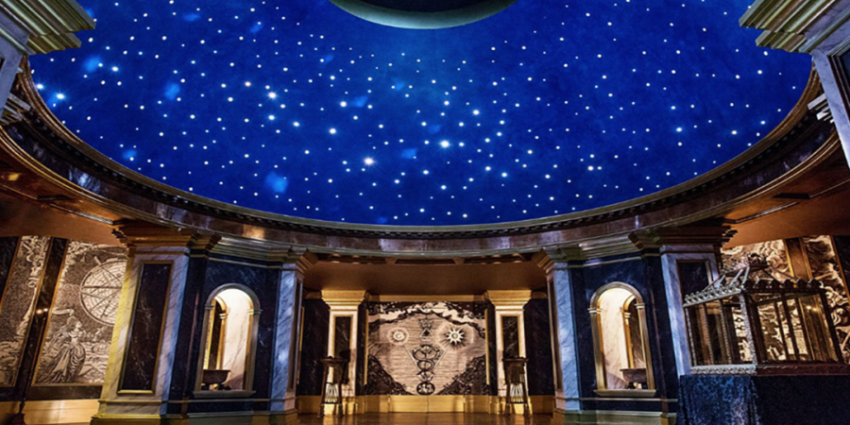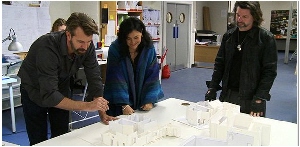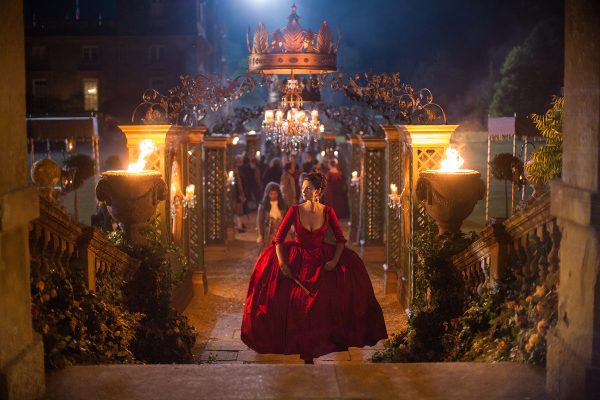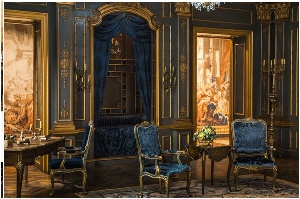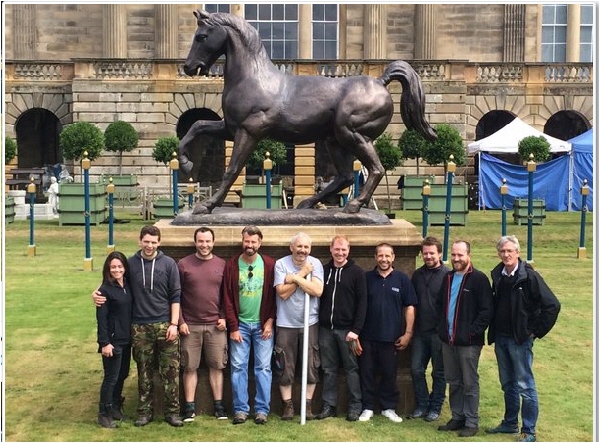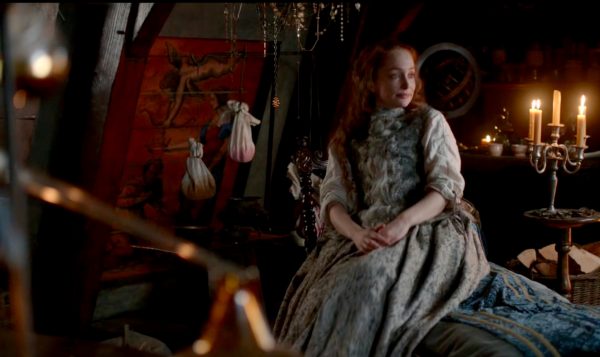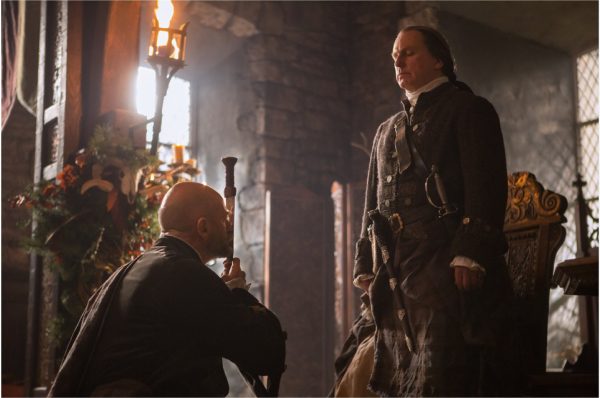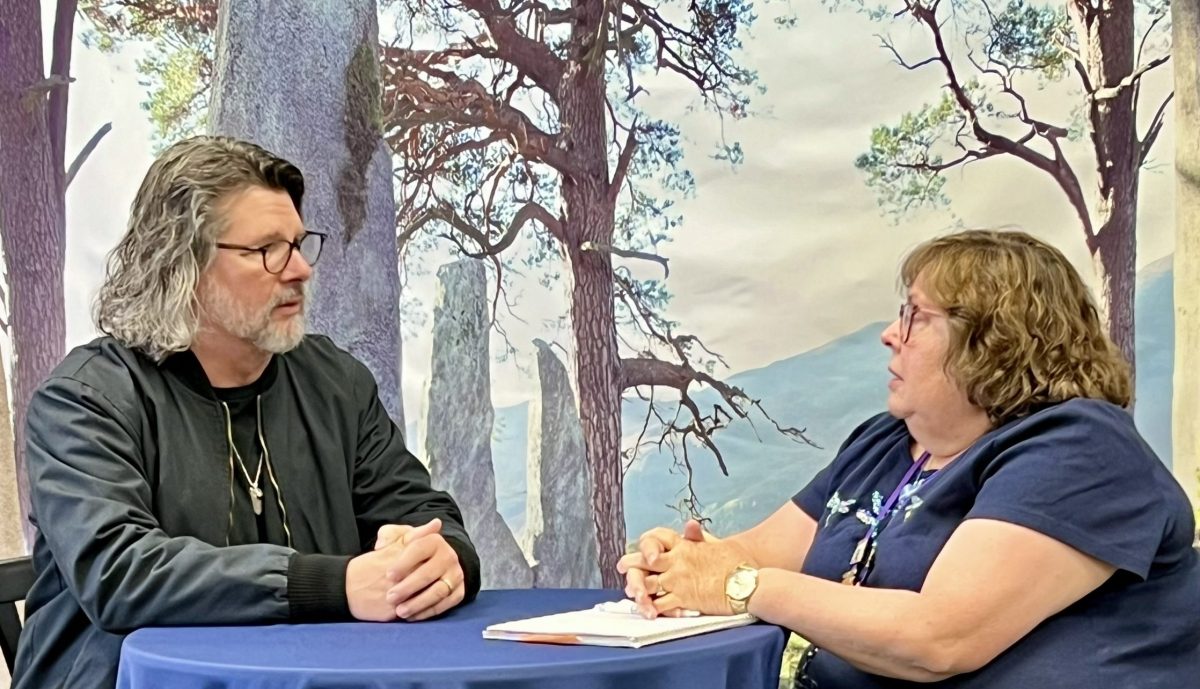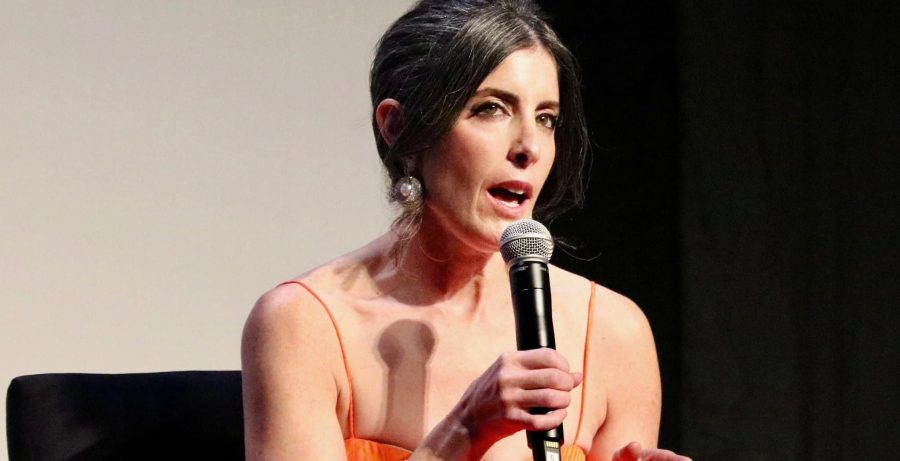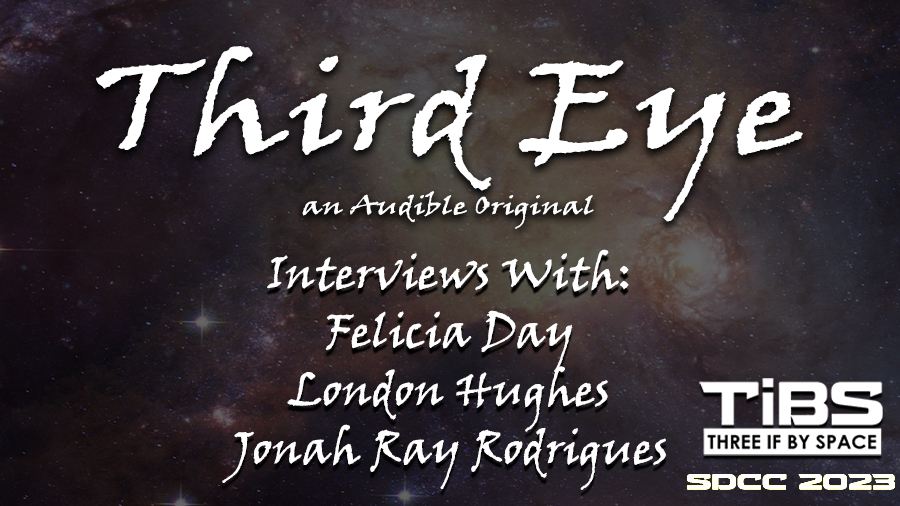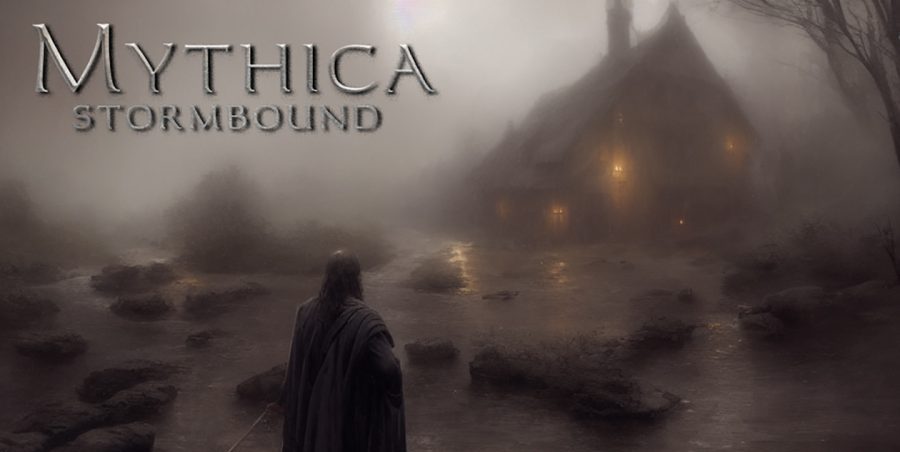Outlander’s Production Designer, Jon Gary Steele, took some time this week and chatted with me – he’s friendly, enthusiastic, excited about what he’s doing with Outlander! Two episodes – Not in Scotland Anymore and Faith – are on the list of selections from which to choose Emmy nominations in the category of Outstanding Production Design for a Period Program, and of course, fans of the show have no problem understanding why! In our two-part interview, Gary talks about the process of designing Outlander’s amazing sets, his excitement for the show, and how much he appreciates the fandom’s recognition. Note that both parts of this interview contain bits that may be considered spoilers – read at your own risk.
TIBS: Tell us a little about your background.
Gary: I was born in California, and raised in Arkansas. I went to the University of Arkansas because they had a great school of architecture and engineering. I wanted to study architecture. It was a five year program; halfway through, I’m thinking I’m loving it. There was a mini series, I’m not going to say what year, a while back, The Blue and the Grey, civil war thing, being filmed there. I saw them taking buildings and completely changing them, and doing what people for film do. Taking streets, and interiors, and buildings, and making what they need for the TV show. I never had thought of it really, and I went, “oh my God, that’s what I’m going to do, that’s what I want to do.” So I went home on the weekend and talked to my mom, said I’m changing my major, I’m going work in film and television. And she said, “no you’re not,” and I said, “yes I am,” “no you ARE NOT.” So we argued, and I ended up finishing my degree, but minoring in theater and film, anything I could find. There weren’t that many classes, but I took everything.
I moved back to California, I didn’t know anybody, and started trying to get in doors, and worked my way up from nothing. I worked in mostly features until this show. The most famous film I worked on was American History X, which was my most favorite film I worked on actually. I thought it was brilliantly directed, brilliant acting, really fun to do. And other things you might know were Cruel Intentions, which was really fun , the whole cast was amazing, the writers and directors, the producers were really fun. More recently, I did Burlesque, and built tons of sets – you had four stages of sets, backlots. A ton of movies that were like, hmmm, whatever. I got to build a lot of shows that had huge sets – like Vacancy, we built a motel interior and exterior, we built it twice, once on a soundstage and once on location. So I’ve been very lucky. I’ve been lucky in the fact that I’ve worked on projects that I’ve got to build. Which is what I really wanted to do. I love the building part of it. I was going to be an architect, that’s what I wanted to do, to be truthful, this is more perfect for me because it’s new each time. One time you’re doing a movie about a skinhead, the next you’re building a glass house, I worked on a movie called Glass House, on Burlesque you’re building theater, you’re building all these different things and I like the fact that each thing is different. And to tie it in to what we’re doing now, the show changes all the time. We’re always moving. There’s always something going on, and each season is different than the next. A different look each year.
TIBS: So how did you hook up with Ron Moore? I was at the Skirball Center when you had the panel there, and you and Terry talked about how you’ve been friends for a long time, and you go shopping, and you like the same magazines and everything. How did you meet them and then end up doing Outlander?
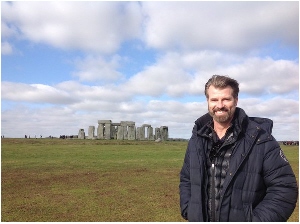
TIBS: I’ve been involved in high school theater, both my kids are actors, I know that’s the tiniest piece of what you do, but it’s fascinating to me.
Gary: That’s the fun part. It is exciting. It is like theater, constantly changing.
TIBS: Had you heard of Outlander before this or was it new to you?
Gary: I had heard about it years before this all happened, because Terry and I talked on the phone literally 5 times a day, every day, as best friends do, and she had read this book years before and loved it, and talked about it all the time. And one day she said come over to my house, I want to show you something. She handed me a book and said read this, I need someone to talk to about it. She said, “this needs to be a film, read it and tell me what you think.” So I read it, and I thought it was awesome too. Because who wouldn’t want to work on an 18th century thing. To be honest, there’s not that many 18th century projects in America. Most of the 18th century things or anything period goes out of the country, they hire a designer from over here, because it’s expensive to do over here. Because there aren’t that many 18th century things structure wise. There are some, but not much, so most of them are made in the UK or somewhere in Europe. So to get to work on this project – someone asked at the press thing the other day in LA, it has been like a dream project. To do 18th century Paris, that was a dream, it was amazing, I loved it, it’s fun. Who wouldn’t want to do all those moldings and gold and color? It’s awesome.
TIBS: This show, if you look at the very first episode to the second season, the middle of the second season, goes from a ramshackle cottage deep in a forest to Versailles. So what has been the biggest challenge to you to encompass different time periods and different levels of wealth, or lack of it?
Gary: The biggest thing we’ve done is Paris, but we were so excited about it, that Terry started before I did, prepping halfway through Season 1. I started designing the sets, we had models built for approval in the middle of Season 1, because we’d heard a rumor that we were going to get picked up, and we were so excited, and most of all we knew for costumes and sets, we needed way more time than they were going to give us. So on our own, we tried to get it all designed and approved before we left, so that way we could build as soon as we get back. We were given four months per season to design and build, but it wasn’t going to be enough, because there was so much detail for the sets, with all the walls covered with moldings and all the intricate sets. Because we wanted to show the decadence of Paris. That period in Paris was one of the most decadent in the history of art, architecture, fashion, landscape architecture. It’s a very glamorous and decadent period, and we wanted to do it right, and make it look as close to that as we could. And to show that the difference from Season 1, being Scotland, to show it was a different world here. Same period, but people lived a different way. It was much more utilitarian.
TIBS: Do you ever feel like you’re making 13 or 16 features instead of hour shows?
Gary: All the time. People on the show talk about that, because of a lot of them do both – this is my first big TV show. It’s like doing at least 7 or 8 features. It’s huge. And when I came back, having dinner in LA, they asked a lot of questions. And I said, “it is SO big, compared to what we do. I’ve built tons of stuff on all the films I’ve worked on, this is way bigger. It’s huge.” That’s exciting. It’s fun. I have such great people – great set decorator, Gina Cromwell, of Downton Abbey fame, our art director, and Nicki McCallum, they’re all artists, the crew is amazing. From carpenters to painters to plasterers, they’re all great.
TIBS: It really shows on TV that there’s so much thought and work put into it. But I don’t think people really understand why the details are so important. When you’re looking at this why are the details, like you’ve talked about, like the staircase at Jamie and Claire’s Paris apartment, that was so important to you, to have the curved, beautiful banister…
Gary: It WAS important.
TIBS: And why are those details so important? You think people are looking at the stars on screen, but why was it important from a finished show standpoint?
Gary: Because we wanted to be outstanding. And we want people to, well, number 1, we want this show to be amazing. Every head of every department looks at it like… I tell my department and they say what do you want? I say I want people to walk in and just weep. And they go, Gary, what do you really want? I go, that’s what I really want. I want them to walk in and go WOW. If it calls for it. And sometimes even when it doesn’t call for it. Why not show the details? A lot of times, the stuff we will do on the set, and even more for costumes won’t get noticed.
But if you’re a hack, and just worry about doing the least amount of work you can, then this is not the kind of show to be on. I don’t mean to put anyone down, but this is the kind of show when you want to sink your teeth into it and show this is what it looked like. Look at this detail, look at the staircase, look at the moldings on the door. Look at the moldings on the wall. Look at the costumes. Look at all that detail. They won’t always see it, but if you didn’t put it in, they would go wow, it’s kind of dead. Why is it not that interesting? We want people to be blown away by the amount of detail that goes into it.
And I think from the amount of tweets that we get sent to us, or the things that people talk about at all of these functions, they love it, they eat it up, they want to know more and more and more about how do we do it. And to be honest, I said this at the panel the other night, it kind of blows you away that people love everything that everybody is doing on the show. And it’s like, yeah, who doesn’t want everyone to like what you’ve been doing. And how many times have you worked on a feature and nobody even notices anything, and it’s not that it should be noticed all the time, but it sure is nice that people appreciate that we’re putting detail into every set, into every costume, every armory, every gun, the horses, and what the saddles look like. We want it to be amazing.
TIBS: And it is.
Gary: And it’s because there are so many passionate people. I’ve mentioned this already, but like the plaster man. He’s this giant, burly man named Alex King, and no matter what I bring him to show what we might be building, he’s like, “GREAT, GREAT! Make it bigger! Make it bigger” And I’m going, I’ve already got construction going, it’s way too big. When I talked to him about the dome, he was jumping up and down. “OH! I know exactly how to do this! Can you get out of my way?”
And I thought he was just excited because he and his group of guys get to do these great things and these exotic moldings, and the dome, and all that, but after Season 1, when we had 2 or 3 episodes that had aired, and I came to him and said, they love it, they love everything about it, Ron’s happy, and he goes, “I LOVE this show. I saw the first episode, I saw the second, it’s f**ing BRILLIANT. I love it!” And I said, you only say that because you think it looks pretty, right? He goes, “NO! I LOVE this show!” Humungous, burly man, and I thought that’s great, if he loves it, we’re going in the right direction.
TIBS: When you’re doing all of these great things, and you’ve got all of these ideas, what do you have to keep in mind that people might not think of? Besides the fact that you have to cram several actors and a director and camera people and you have to be able to light the whole thing, what kind of challenges do you face?
Gary: You’re trying to show… more so on some sets than others, each set becomes a character. For instance, Geillis in the first season. Her upstairs little witch’s room, that was one of my favorite sets of last year. That was crammed full of mystical and magical things that most people may not catch, but it’s there. The walls and the ceiling are covered with tarot cards handpainted to the ceiling panels from the Renaissance era. And there’s stuff throughout her whole place that was filled with all that. I mean, she’s supposedly a witch, we don’t know for sure, and so we were trying to make it special.
And the things we stuck in there – like I saw on some crazy blog a painting – I don’t know how to describe it any better than that – it had all these crystals and beads, and little charms, and it was probably from 1960 something, and it was on some blog about some beautiful apartment, and I showed it to the decorator, and I said I want to do this for Geillis. And she goes it’s from the ‘60s. And I said, exactly! She’s from the ‘60s, I don’t know if I’m supposed to tell that. It’s a hint that she’s from the ‘60s. She’s got the vaccination, and all that, so we had one made that was similar – we had beads and crystals and all that, I think there were one or two things on this whole hanging thing that were on her space that were from the ‘60s. I told people about it later, I stuck something in there that Gina and I wanted a hint of where she was from. That’s fun to do that kind of stuff. You can’t usually talk about it until way after it’s aired, but it’s fun.
But we’re trying to give character – sometimes they’re just walking into a room that’s a tavern, and there’s not much you can do, but anytime it’s a real person’s place, like the Star Chamber, we crammed that full of mystical magical things. The floor and the walls are covered with symbols from the 16th century of sacred geometry, astrology, astronomy and alchemy. We did a lot of research on that. And that was fun. We get the most response – it seemed to be the favorite of everybody. The actors loved it, the fans seemed to love it. That was fun. That’s what we’re trying to do, show more of the character of the setting – unless it’s a tavern or whatever – but we’re still trying to show that it’s the proper location, this is the size of the tavern, or this is the size the house would be, or this is the great hall in the castle during the first season for Castle Leoch. It was very utilitarian, there was no upholstered furniture. We did that on purpose.
We knew Lallybroch was coming, and we wanted to make it more like a home. We made a copy of a couch which is in some museum somewhere in Europe. And that’s the couch that was in there. We wanted it to feel like a home, where as the other was a working castle – tables and benches, and completely utilitarian. Each space was used for many different things. Gatherings with music, gatherings for prayer, and food, and festivals. So that’s what you’re trying to convey. Trying to make it as real as you can.
TIBS: I don’t know how all this comes together, but you really feel like you’re part of what’s going on instead of just watching it from the outside.
Gary: That’s awesome.
Gary’s website: jongarysteele.com
For more behind the scenes goodies, check out Outlander Community
Follow me on Twitter: @OutlanderTIBS, @ErinConrad2 and @threeifbyspace
Like us on Facebook or Subscribe to get instant notice of new posts
Share this article using our Social Share buttons above!

